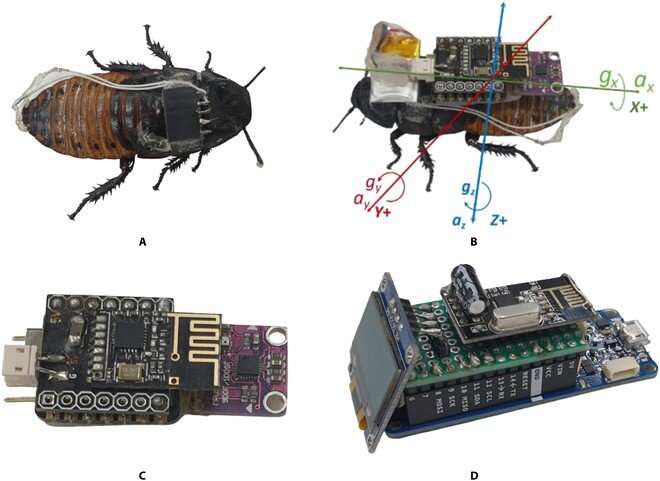Scientists suggested implanting electrodes into animals’ brains or nervous systems to control their movement and vision, thus converting a cockroach into a cyborg.

Some insects like cockroaches prefer to stay or decrease movement in darkness due to photophobia, a habit coded in their genes. Natural animals’ survival abilities in harsh environments have inspired roboticists to develop biomimetic robots.
Scientists at Osaka University have proposed the idea of converting a cockroach into a cyborg. Implanting stimulation electrodes into natural animals’ brains or nervous systems to directly control their movement and vision is known as creating cyborgs. Cyborg insects are gaining popularity for their simpler neuro-muscular pathways, ease of operation, and ability to intrude into their peripheral nervous system or muscles.
As per the Scientists, the Cyborg cockroaches, equipped with agile locomotion capabilities, are well-suited for search and rescue missions in unknown and unstructured environments due to their superior mobility compared to similarly sized biomimetic robots. Cockroaches’ natural behaviors make them unsuitable for search and rescue missions in dark, narrow areas, and hot environments. Attaching a mini camera for real-time monitoring in low-light conditions is also challenging. This study aims to enhance the movement performance of cyborg cockroaches.
Scientists suggest using machine learning to detect the motion state of a cyborg cockroach via IMU measurements and applying electrical stimulation to its brain to promote movement if it stops in darkness or cooler environments. The online detector minimizes stimulation to prevent cockroaches from getting fatigued by excessive stimulation. Restraining electrical stimulation to necessary circumstances determined by AI algorithms via onboard measurements gives cyborgs some autonomy, which is promising. For example, in a rescue scenario, the cockroach can be stimulated to turn its direction or move when it stops unexpectedly. The cyborg showed a 68% higher search rate and 70% longer travel distance while reducing stop time by 78%.
Electrically stimulating the cockroach’s cerci overcomes its ingrained habit of decreasing locomotion in dark and cold environments. This study stimulated the cerci to induce the free-walking motion of the Madagascar hissing cockroach (MHC).
Reference : Mochammad Ariyanto et al, Movement Optimization for a Cyborg Cockroach in a Bounded Space Incorporating Machine Learning, Cyborg and Bionic Systems (2023). DOI: 10.34133/cbsystems.0012





